PART 1 IS HERE.
“The Americans will never submit to the restrictions which have been imposed upon the Dutch and Chinese, and any further allusion to such restraints will be considered offensive”, - the US Navy Commodore M.Perry when negotiating with Japanese commissioners in 1854 about opening Japan to American trade. Of course, he could be strong in his statements: the naval power of ships he brought with him was much more superior compared to those of then isolated Japan.
As an aftertaste of Japanese history lessons in the university, I had always wanted to visit Shimoda.
Partially for history, but I was always curious about the location. Faraway town in the southeastern end of Izu Peninsula, kind of end of main Honshu Island, port, parks, walks, likable to me the amount of population of around 20,000.
Now back to the history. Let me try in one sentence about the end of self-isolation of Japan, the period known also as “sakoku”. Until Commodore (in modern terms Commander in Chief of the then US Navy) Matthew Perry came to Japan on his Japan Expedition, local shoguns were isolating the country from outside world for more than 200 years (from 1603 to 1854 or officially to 1868) to mostly curb commercial and religious influence of the West, predominantly those of Spain and Portugal, however still trading rather actively with Dutch, Koreans and Chinese via designated ports which did not sit well with US, UK and others, and Perry came with four ships to Kurihama (I often hike there) first in 1853 showing strong military fists and thus preparing ground for negotiations in 1854 when he came to Shimoda with now eight ships to make sure there is no more I Will Think About It, that is what Japanese like to say when they want to say no, and the process of actual signing the agreement started flowing year by year into subsequent treaties of Japan with Western countries and then sending Japanese own missions overseas to “learn” about Western culture and trade, but this still being another excuse to further delay the opening of all ports of the country with all delays finally removed in 1868 when Japan entered Meiji Restoration era marking the end of feudal society of Tokugawa Shogunate.
I took a train to Izukyu-Shimoda, the last stop on Izukyu railway. First, I took cable car to the top of Mount Nesugata to get my bearings. Then I decided to walk towards Cape Tsumeki (Tsumekizaki). The route was something like this.
First stop was Madogahama Park. I enjoyed sitting on the sun and having fruits whilst watching cruise and working boats crossing Shimoda Bay.
Somehow Shimoda Bay reminded me Rose Bay in Sydney. Of course, no mountains, but something similar…
Fruits finished, I proceeded to Harris Path. Again, a piece of history here. Townsend Harris was the first American diplomat to serve in Shimoda. Why not in Edo (current Tokyo)? Well, this was part of the strategy by Japanese government to delay signing of the treaty, so Mr. Harris set up the first US Consulate in Japan inside Gyokusenji Temple before moving to the capital in 1857.
"The most civilized people East of the Cape of Good Hope", - wrote Harris about Japan regardless (guess he meant modern South Africa’s Cape of Good Hope). Probably this applies a lot to the current Japan also.
So, may be Sir Harris was also hiking on this path, who knows.
I definitely enjoyed this part of the hike thinking on the way whether Harris slept on tatami mats of the temple, or he installed a normal bed for himself…
After Harris Path the route went through main roads, but there were really only a few cars there. Closer to the Cape I passed Kujupama beach. It looked very inviting, but I decided to proceed towards Tsumekizaki and spend more time there.
This is Kujupama beach. Nobody!
Another 15 minutes or so, and I can see Tsumeki Cape ahead.
Walked to lighthouse and sat there for a while enjoying the views. On the left is West Izu, white buildings belong to Inatori port and village.
Again, clear view of Toshima Island.
Somehow here I felt to be the highlight of my trip to Izu: remoteness, wilderness, calmness…
Well, need to move, can always come back. Where to next? Wanted to wander a bit more, and near the bus stop came across a map featuring Suzaki hike.
The trail actually starts at the Cape and is only 3 km, but the last bus was leaving in 20 minutes, so I decided to do it next time and instead roam around Shimoda old town.
Here is my bus. Chatted with the driver.
“You are my only passenger today”, he smiled, telling me that closer to the winter there are fewer bus routes to town from the Cape and much less people during this time of the year.
“I will come back, and thanks for the big taxi at the bus price”, I happily engaged in a conversation, mind shelving Suzaki trail for the later, when I return to now explore South and West of Izu.
I asked “cabbie” to stop near Madogahama Park and once again enjoyed the bay view.
Then I walked towards the town.
“Hello stranger”, the sound of stopping truck behind me and smiling Nagai-san I mentioned in the previous blog, appearing from behind the wheel.
“Izu is really small or maybe it is the fate”, we agreed and decided to meet for beers in one hour. It was our 3rd encounter during my walks in Izu, so we had to cement this somehow.
I continued walking. Small streets, even slightly away from tourist routes, were nearly empty.
Pleasant Perry Street with small cafes and little shops.
Now time to go to the train station izakaya to meet Nagai-san. We had good conversation about outdoor hobbies, Izu hikes veering gradually to more global world issues in proportion to the number of beers ordered. Nagai-san, as a mechanic, is doing many different repair jobs, but he also is making runner sandals. Kits can be ordered here.
You can buy “parts” to DIY or just buy the finished product. I will order.
Back in the train towards Atagawa onsen hotel, I summarized the day: I liked Shimoda. And I will come again!
Yours in travel
IZ
P.S. Finishing these belated notes at Changi airport. Hope I can diarize my Singapore impressions soon.
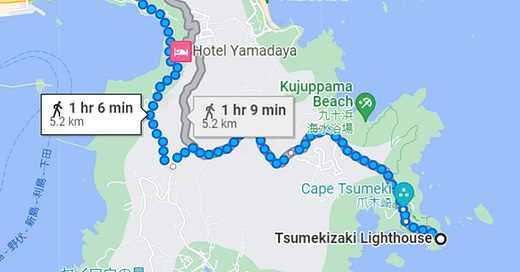



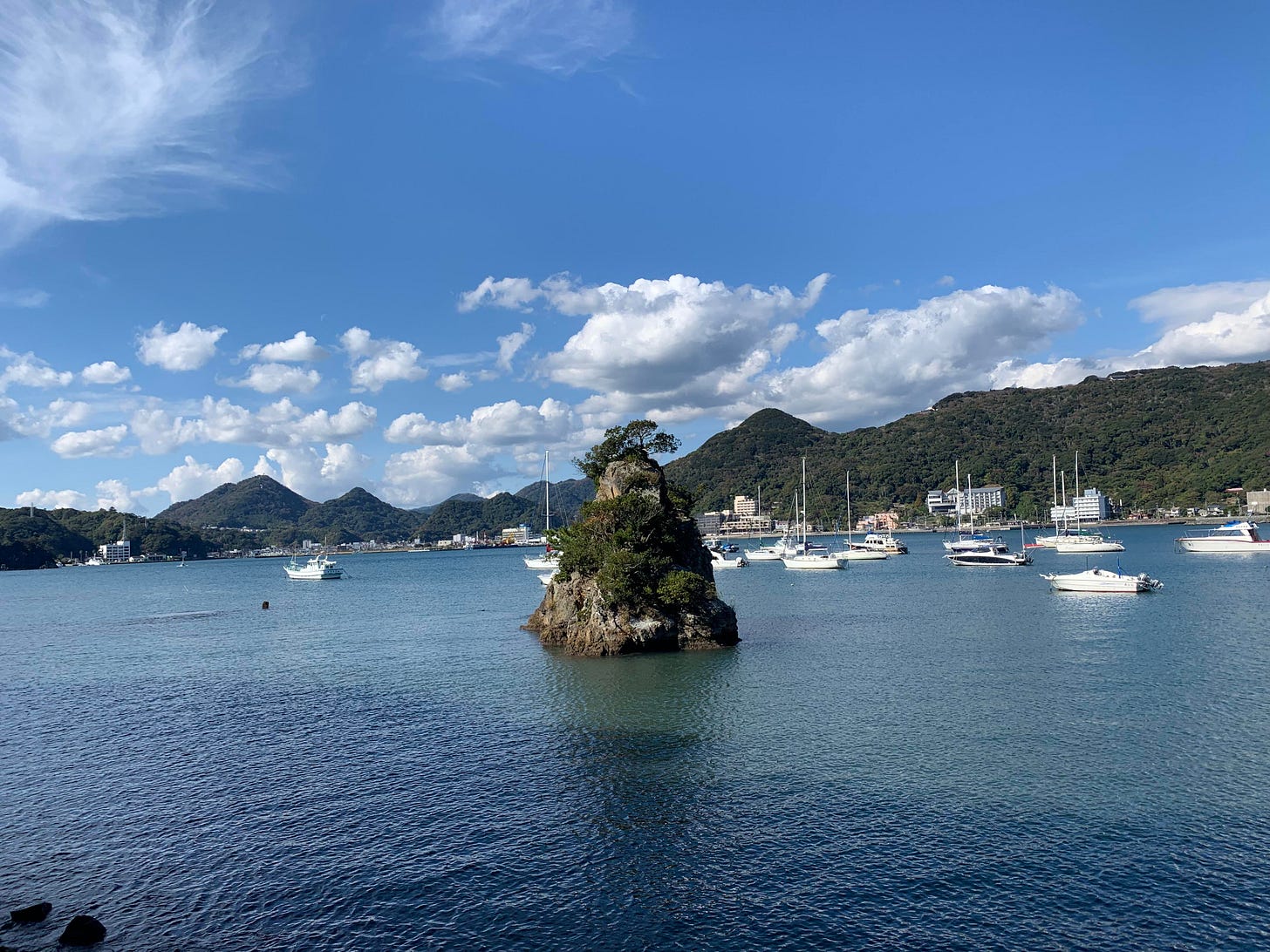
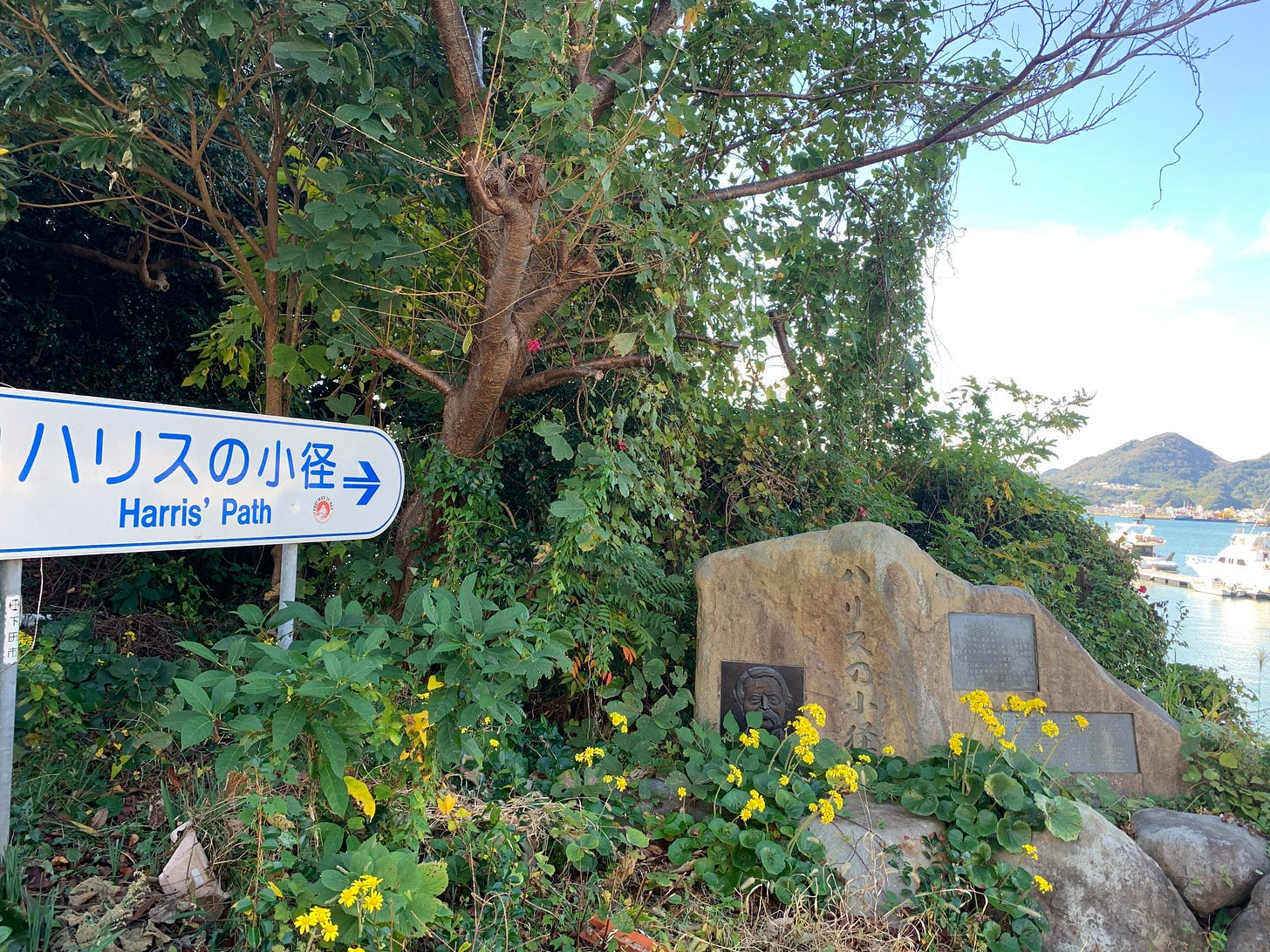


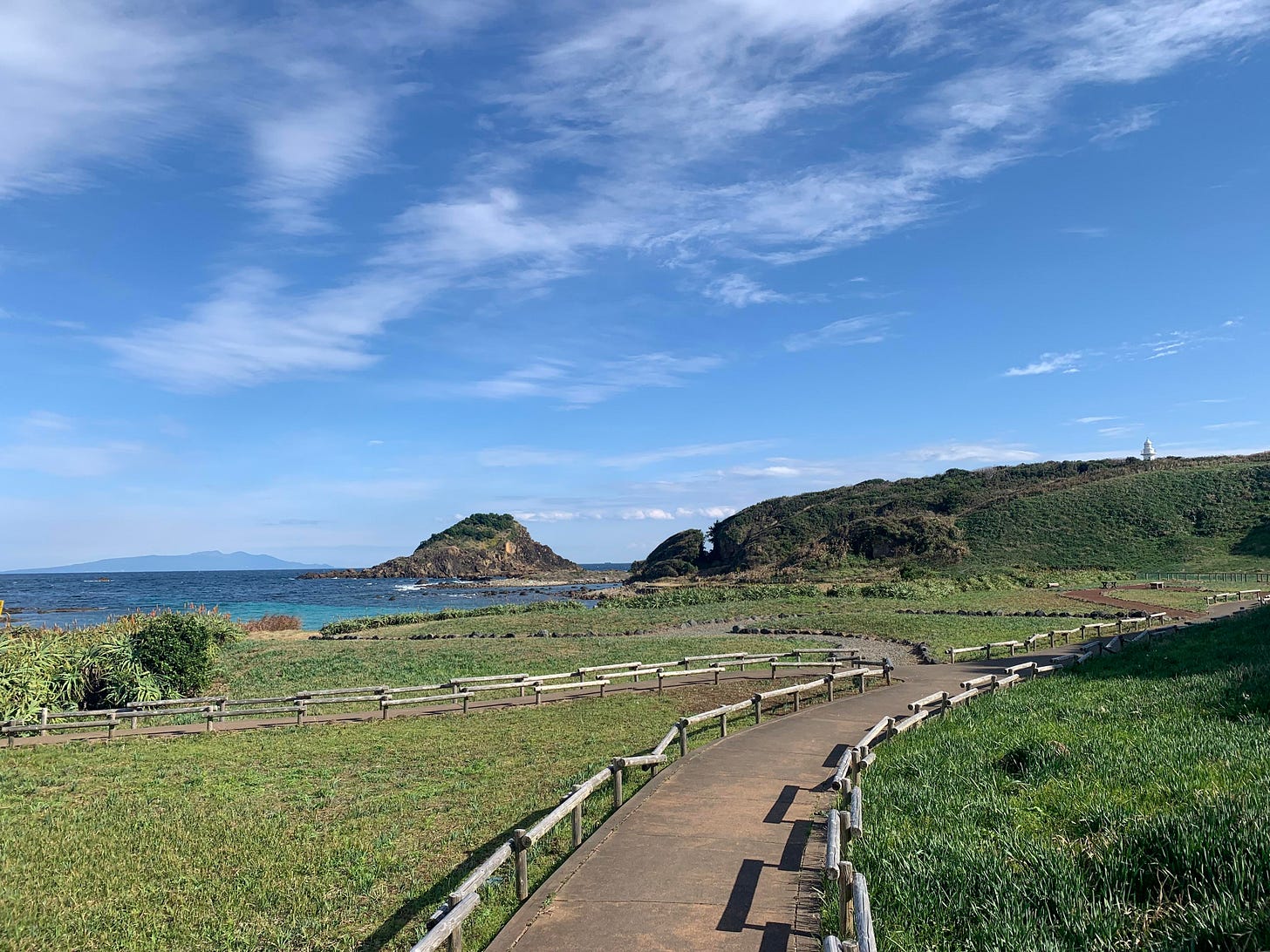

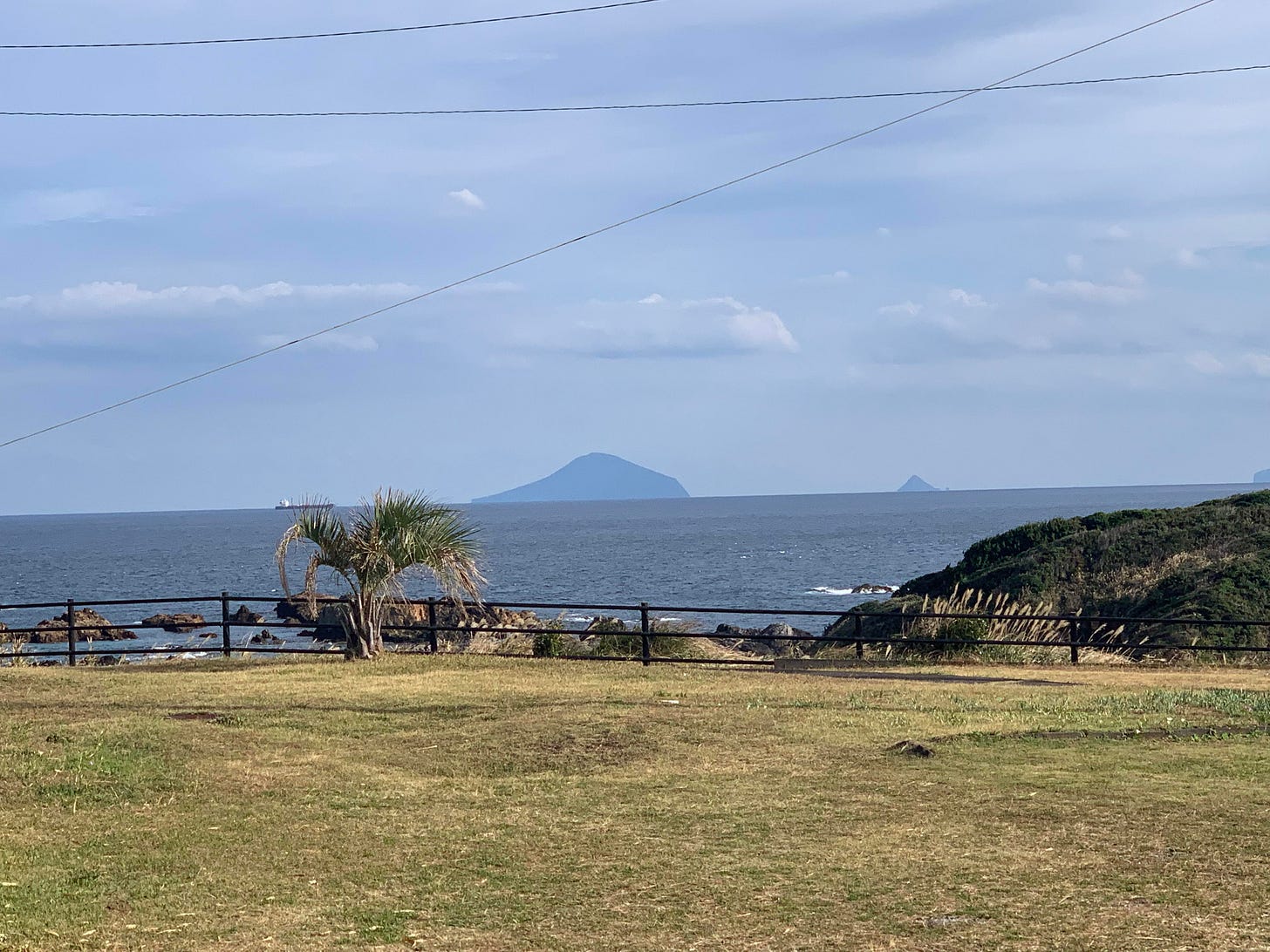

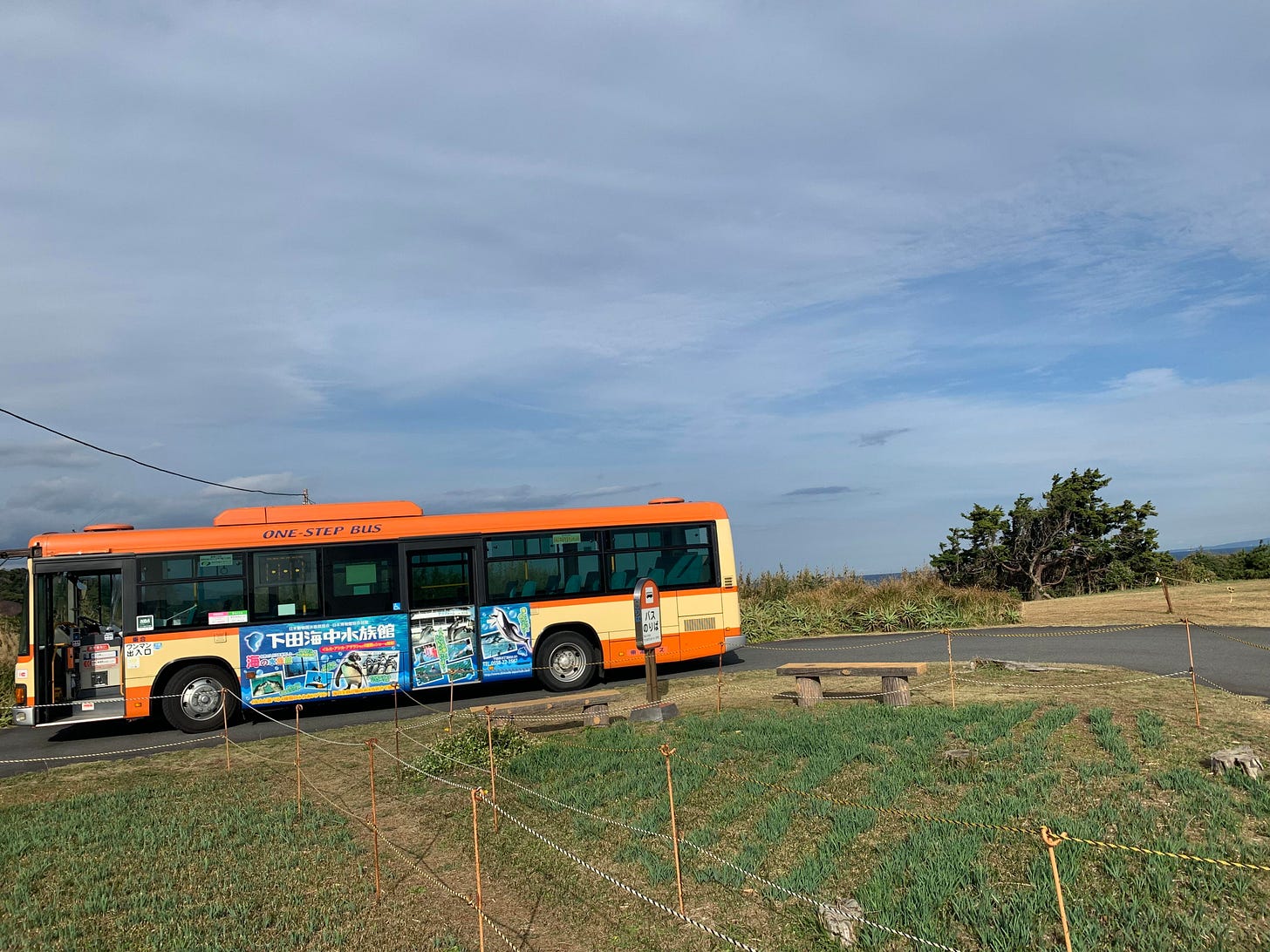


Igor, I enjoyed reading your blog. I'm very happy that Shimoda seems to like it. Please let me know when you come to Shimoda next time. I will coordinate the work and guide you 😊